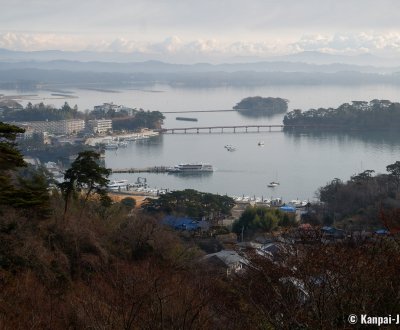Matsushima
The Famous Bay with Pine-covered Islands
Matsushima is a bay of the Pacific Coast, located in the north-east of Sendai in Miyagi prefecture in the Tohoku region. Designed as one of Japan’s 3 most scenic places since the end of the Edo period (1603 - 1868), it is characterized by a string of 260 pine-covered islets shaped by weathering, that seem to float above the water.
Matsushima, whose name translates as "pine trees island", is one of the most famous and visited of Japan’s traditional landscapes in Miyagi prefecture, on the coast of the Pacific Ocean, 50 km to the north-east of Sendai and about 400 km north to Tokyo.
About 260 little islands and rocky islets surmounted by pine trees are sprinkled in the bay. Its appearance has barely changed since it was popularized more than 400 years ago by the Date clan that was ruling the area at the times. At the end of the Edo period, it was included in the Three Views of Japan (日本三景 Nihon sankei) along with Miyajima in Hiroshima Bay and Amanohashidate in the north of Kyoto prefecture.
Access to the site is easy from Sendai, in less than 30 minutes by train 🚅. Then, the exploration of Matsushima on foot or on bicycle is easy. The town facing the bay offers all the necessary shops to grab something to eat or buy souvenirs. Matsushima is a classic sightseeing destination where travelers can enjoy various activities, such as:
- Pleasure-boat cruising between the islands of the bay,
- Visiting historical constructions, such as the Kanrantei tea house and the Zuigan-ji, Entsu-in and Godaido temples, all built during the reign of Date Masamune (1567 - 1636) and heirs,
- Strolling on the shores and on the islands connected to the mainland by bridges, or,
- Reaching a height to admire a panoramic view on Matsushima.
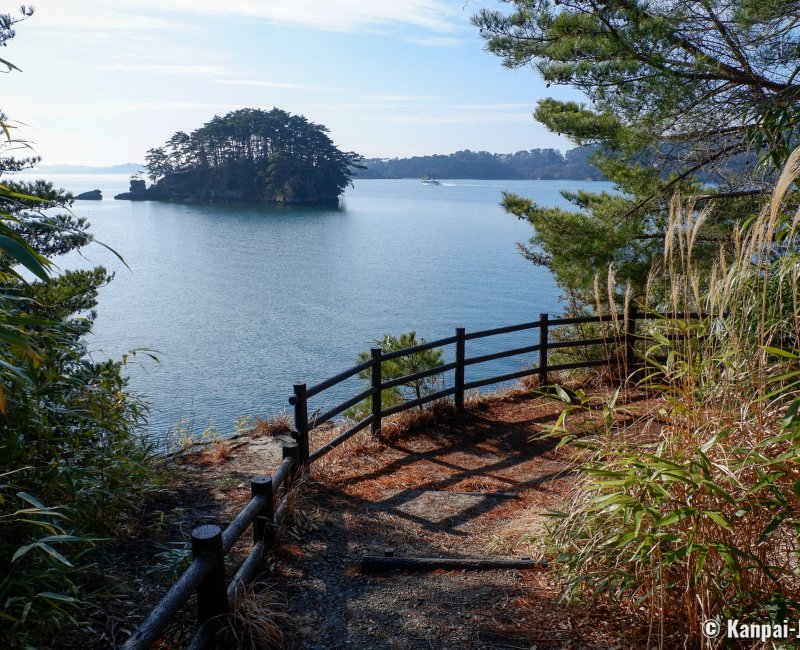
Panoramic views on the bay
Take a comprehensive view of the place upon arrival. From Matsushima JR station, walk for a fifteen minutes to reach the Saigyo Modoshi no Matsu Park on a hill. The place was named after the monk and poet Saigyo Hoshi (1118 - 1190) and could be translated as "the pine that sent Saigyo home". The legend has it that traveling monk Saigyo rested under a pine tree at the top of the hill. There, he met a young man with whom he played a game of Buddhist riddles and lost. Thanks to this intellectual defeat, he returned to his temple to study more assiduously.
The peak of the park is now renowned for its pleasant outdoor observation deck on the bay. From there, one can see the string of islets appearing like a master’s artwork when the weather is clear. Some facilities, such as the Panorama House have been built for the comfort of sightseers and in spring the blooming of cherry trees 🌸 further embellishes the settings.
Other places in the surrounding also offer beautiful panoramic views on this unique landscape such as Matsushima shidaikan (松島四大観) that encompasses the 4 main viewpoints to experience from:
- Mount Otakamori (大高森),
- Mount Tomiyama and Daigyo-ji temple (大仰寺),
- Mount Ogitani (扇谷); and,
- Mount Tamonzan (多聞山).
These observatories can easily be reached by car 🚙.
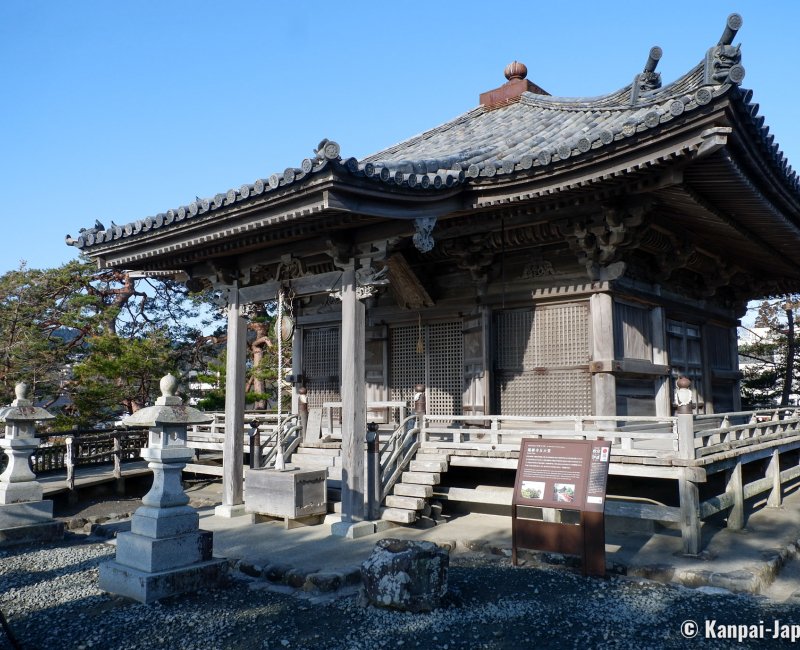
Godaido Temple, symbol of the eternal landscape
Overhanging the sea and facing Matsushima pier, a cluster of tiny islands is home to Godaido temple (五大堂). It is said to have been founded in 828 by Jikaku Taishi (794 - 864), a great Japanese Buddhist teacher of the Tendai school.
The present days’ construction, still in perfect condition, dates back to 1604 and was ordered by the warlord Date Masamune to celebrate the victory in the Battle of Sekigahara (October 1600). As incredible as it may seem, probably thanks to its protected location above the water and ahead to the land, the temple miraculously suffered very few damages from the 2011 Tohoku’s earthquake and tsunami.
For preservation purpose, the inside of the main pavilion is no longer accessible to the public, but it is still possible to admire the facades ornamented with beautiful wood carving. The attention is drawn toward the peculiar structure of the little red bridges, named sukashibashi, linking the islets together. The planks constituting the deck have indeed been spaced so as one has to stay focused when crossing, as part of the worshiping attitude.
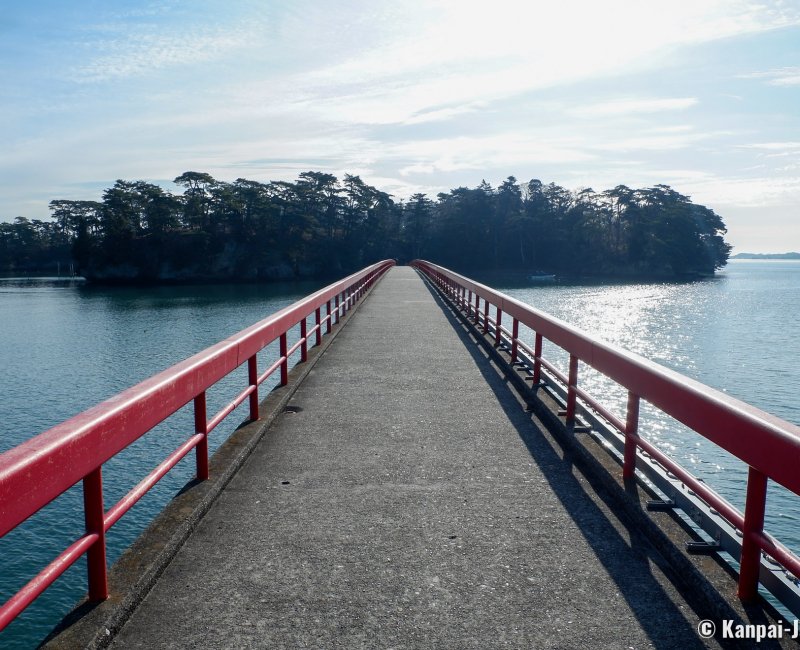
Fukuurajima, the botanical garden above water
From Godaido, one can view Fukuurajima island, characterized by a 250 meters long red lacquered bridge named Fukuura-bashi. This long straight line above the water is the signature of Matsushima bay’s landscape and raises the curiosity of first-time visitors. Quite narrow and only accessible for pedestrians, walking on this bridge arises a strange feeling, as if going on an adventure.
Fukuura-jima is crowned by trees, and forms a somewhat wild botanical garden, gathering about 300 species of flowers, plants and trees. It does not take longer than one hour to tour the island. Benches arranged in quiet and unobstructed places allow to admire the original geological formations of the islands and the blue background of the sky and the water delicately outlining the pine trees pinnacles.
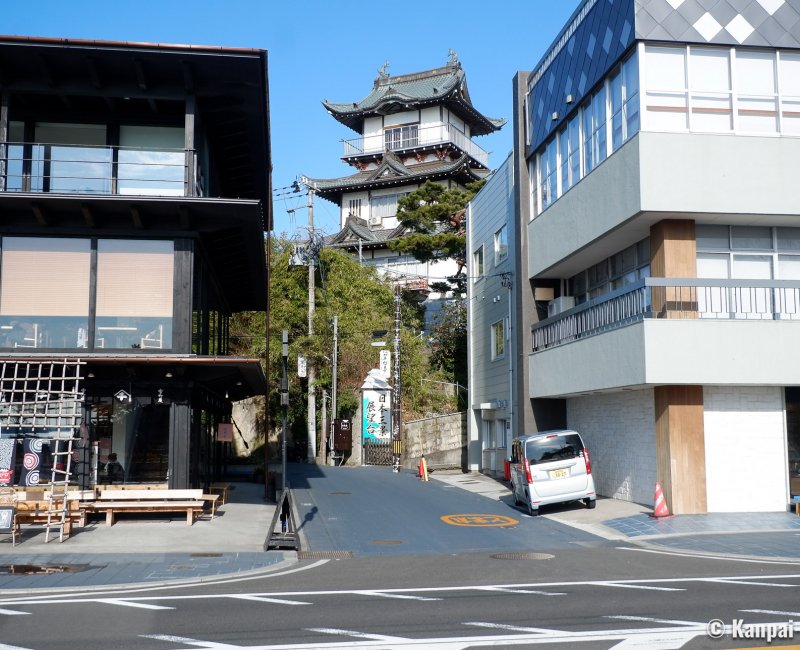
Hearty welcome of Matsushima’s shopkeepers
Matsushima-shi is the small town hugging the eponymous bay. Served by 2 JR lines, it is only consists of a few houses and a main street lined with shops, where travelers are kindly welcomed.
Seafood are the local specialties, and in winter the must-try is the oyster cooked on a plancha. The oyster bar Oyster Shack located in the city’s Tourism Association Building has a range of all you can eat menus. We also recommend to take a break at the Santori Chaya, a restaurant serving delicious local traditional dishes in a warm and family-like ambiance. The Matsushima Fish market is also worth the detour for purchasing fresh products.
The coast in the vicinity of the cruise boats pier was particularly well laid-out and it offers a pleasant walk. The various islands connected by bridges as well as paid sightseeing attractions (museums and temples) are all within walking distance. There is also a modest castle 🏯 keep enclosed in a residential neighborhood but it is not authentic and only used as an observation tower on Matsushima archipelago, provided it is open.

